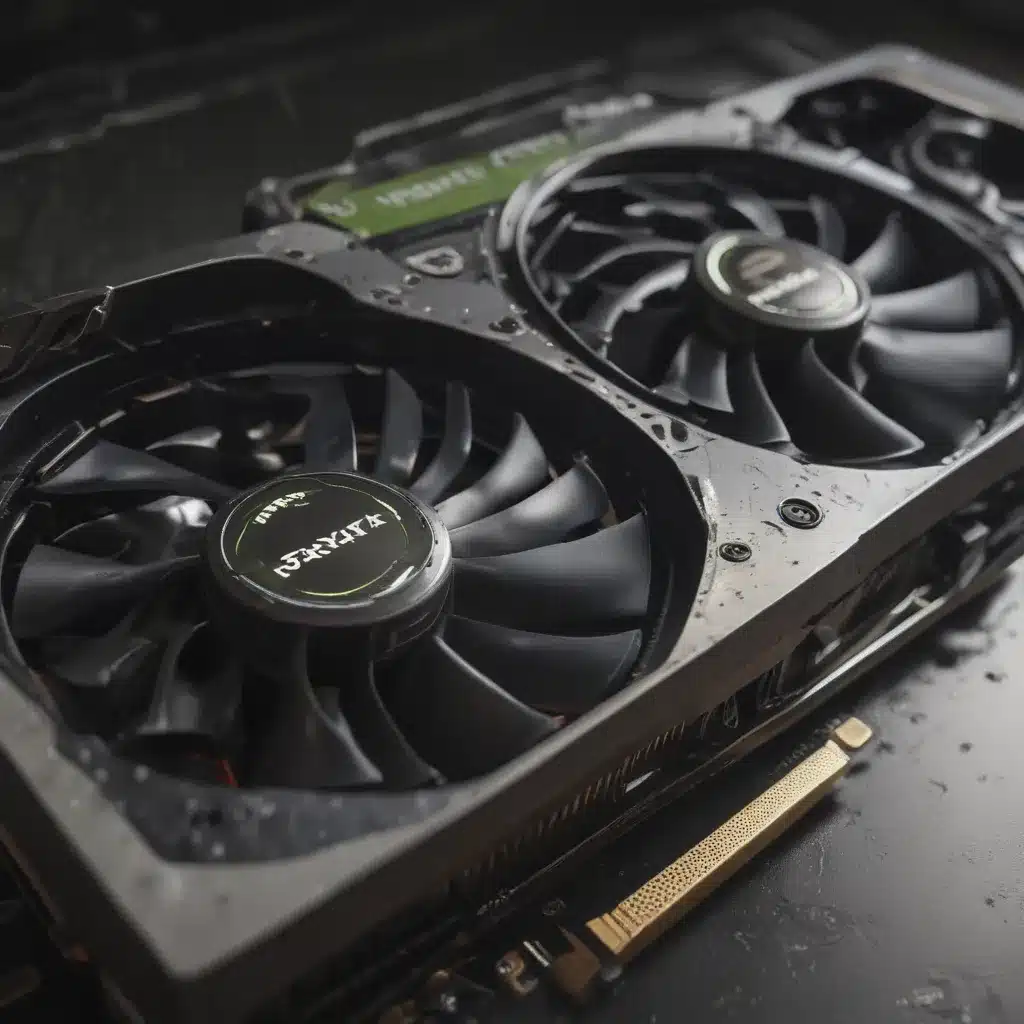The Ray Tracing Revolution
As a game developer in the UK, I’ve been absolutely captivated by the rise of ray tracing technology. This revolutionary approach to 3D rendering has the power to transform the visuals of our digital worlds, ushering in a new era of cinematic realism. But with so many GPU options on the market, how do you choose the best one for crafting your ray traced masterpieces?
Let me tell you, the decision isn’t as straightforward as you might think. It’s like trying to pick the perfect paintbrush for your artistic vision – the wrong tool can leave your canvas looking like a kindergartener’s finger painting. But fear not, my fellow developers, I’m here to guide you through the GPU gauntlet and help you emerge victorious.
Nvidia vs. AMD: The Great Debate
Now, I know there’s been a lot of chatter about the Nvidia vs. AMD debate in the world of PC gaming. Some folks swear by Team Green, while others are die-hard AMD enthusiasts. But when it comes to ray tracing development, the lines start to blur a bit.
You see, I’ve been a loyal Nvidia user for years, and I can attest to the reliability of their drivers [1]. I’ve never had any issues getting my GTX 970 up and running, and it’s been a trusty companion in my Vulkan development endeavors. But I’ve also heard whispers that AMD’s latest Radeon offerings are making some serious strides in the ray tracing department.
So, what’s the deal? Well, according to the reddit thread [1], it seems like Nvidia has historically been a bit quicker to the punch when it comes to implementing the latest Vulkan standards. Their drivers tend to be rock-solid and readily available, making the whole setup process a breeze. But AMD isn’t slouching either – they’ve been steadily improving their open-source and proprietary driver options, and some users report that “AMD just works” on Linux [1].
Diving into the Specs
Now, let’s get down to the nitty-gritty. When it comes to choosing the best GPU for ray traced game development, there are a few key factors to consider:
Memory Capacity and Bandwidth
As our 3D scenes become more and more detailed, the amount of video memory (VRAM) our GPUs have becomes increasingly important. According to the experts at Simple Programmer [2], you’ll want at least 12GB of VRAM to handle those complex environments without your system grinding to a halt. And it’s not just about the size of the memory – the memory bandwidth, measured in bits, also plays a crucial role in rendering speed.
Processor Cores
The more CUDA cores (or their AMD equivalent) your GPU has, the more data it can process in parallel. This translates to faster performance, which is essential when you’re iterating on your ray traced assets and effects.
Ray Tracing Capabilities
If ray tracing is a core part of your game’s visual identity, you’ll want to ensure your GPU has dedicated hardware for this task. The latest Nvidia RTX and AMD RX cards come equipped with specialized ray tracing cores, allowing them to render realistic lighting and reflections with breathtaking efficiency.
Price and Availability
Of course, the financial aspect can’t be ignored. As the Microsoft Azure team points out [4], the most powerful GPU options can come with a hefty price tag. And with the ongoing global chip shortage, availability can be a real challenge. So, finding the right balance between performance and budget is crucial.
Putting it All Together
Alright, let’s put this all together and see which GPUs might be the best fit for your ray traced game development endeavors.
At the top of the heap, we have the mighty ASUS ROG Strix RTX 4090 OC [2]. This beast of a card boasts a ridiculous 24GB of VRAM, a sky-high memory bandwidth, and enough CUDA cores to make your head spin. It’s the ultimate tool for crafting the most visually stunning ray traced games. But with a price tag that could make your wallet weep, it might be a bit of a stretch for some independent developers.
If the 4090 is a bit out of your price range, the MSI GeForce RTX 4070 Ti [2] could be a compelling alternative. It offers excellent performance, with 12GB of VRAM and a speedy memory interface. Plus, it’s significantly more affordable than the top-tier options.
And for those of us on a tighter budget, the Gigabyte GeForce RTX 3060 OC [2] might be the way to go. It’s a solid entry-level card that can still handle ray tracing workloads with respectable performance, all while costing a fraction of the high-end models.
Of course, the Intel Arc A770 [3] is also worth considering, as it offers an intriguing alternative to the Nvidia and AMD duopoly. While the jury is still out on its real-world ray tracing capabilities, it could be a cost-effective option for budget-conscious developers.
Embracing the Future
As we look to the horizon, it’s clear that ray tracing is the future of game development. While the technology may still be in its infancy, the level of visual fidelity it can achieve is simply breathtaking. And with each new generation of GPUs, the performance and affordability barriers continue to erode.
So, whether you’re a seasoned veteran or a fresh-faced indie dev, I encourage you to embrace the power of ray tracing. Experiment, push the boundaries, and create experiences that will leave your players in awe. The future of gaming is bright, and with the right GPU in your arsenal, you’ll be well on your way to crafting the next masterpiece.
[1] https://www.reddit.com/r/vulkan/comments/wrrpxb/help_choosing_between_nextgen_nvidia_and_amd/
[2] https://simpleprogrammer.com/best-gpu-for-game-development/
[3] https://www.reddit.com/r/IntelArc/comments/155q4d5/whats_point_of_choosing_intel_arc_a770_gpu_over/
[4] https://learn.microsoft.com/en-us/gaming/azure/game-dev-virtual-machine/choosing-gpu-sku
[5] https://www.reddit.com/r/pcgaming/comments/1260agx/just_me_or_is_ray_tracing_overrated/
[6] https://forum.unity.com/threads/ideal-pc-spec-for-development.1048505/
[7] https://www.reddit.com/r/buildapc/comments/10naqlo/is_raytracing_worth_it/
[8] https://www.linkedin.com/pulse/multi-gpu-tutorial-unreal-engine-alex-pearce













